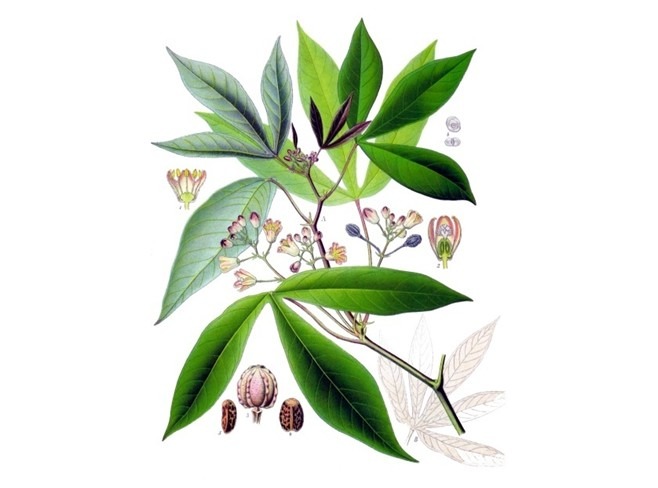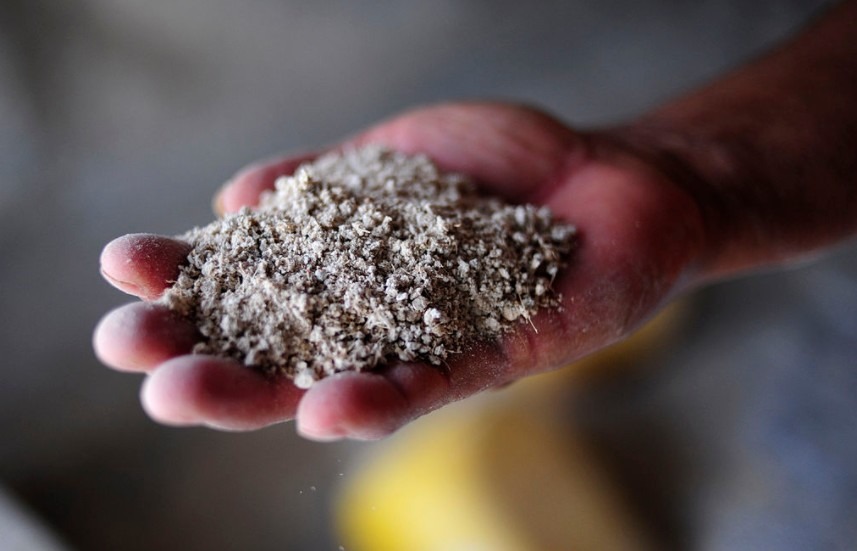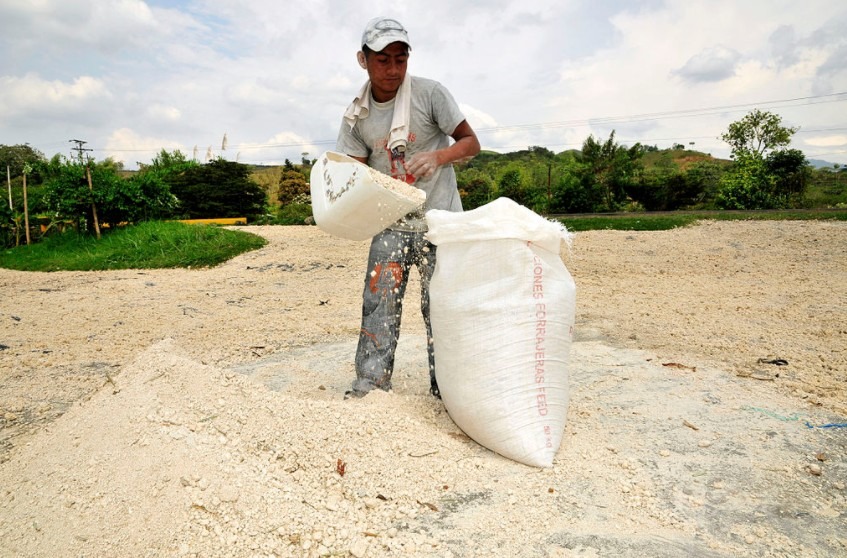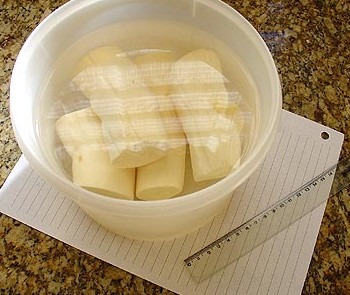Cassava (Manihotesculenta) is also known by many other names, such as yuca, mandioca, manioc, agbeli, macaxeira, and aipim. It belongs to the spurge family, Euphorbiaceae, and is native to South America. Cassava is a woody shrub that is widely cultivated in tropical and subtropical land as an annual crop. It is conventionally cultivated due to its consumable starchy tuberous root, which is a significant carbohydrate source.
Despite being called yuca in the United States and Spanish America, it is not related to a shrub yucca of the family Asparagaceae. Cassava is mainly consumed in boiled form, but considerable quantities are used to take out cassava starch, known as tapioca. Tapioca is used for industrial purposes, animal feed, and food.
In tropics, cassava is the third-largest food source for carbohydrates, after maize and rice. In the developing world, it is a significant primary food, delivering a fundamental diet for over half a billion individuals. Cassava is categorized as either bitter or sweet. Like all the other tubers and roots, both varieties of cassava contain toxins and antinutritional factors. The bitter ones contain higher quantities of them.
Before the consumption of cassava, it must be prepared properly. The improper preparation can lead to goiters, partial paralysis, acute cyanide intoxication, even ataxia, or death, due to enough residual cyanide. Farmers prefer bitter varieties more since they deter thieves, animals, and pests.
Potential Toxicity of Cassava
Avoid consuming raw roots, leaves, and peels of cassava as they contain two cyanogenic glucosides, lotaustralin, and linamarin. The presence or absence of cyanogenic glucosides toxic levels determines the varieties of cassava. The quantity of cyanide produced by sweet varieties of cassava per kilogram of roots is as less as 20 milligrams, whereas the bitter ones produce 50 times more cyanide.
The level of toxins is high in the cassavas cultivated during drought. A serving of 25 milligrams of pure cassava cyanogenic glucoside contains about 2.5 milligrams of cyanide. It is a sufficient amount to kill a rat. Improper preparation leaves excess cyanide residue, which leads to several health conditions like acute cyanide intoxication, ataxia, goiters, and linked to tropical calcific pancreatitis as well.
The symptoms of acute cyanide intoxication include vomiting, vertigo, collapse, and appears at least four hours after the ingestion of poorly prepared cassava. In a few cases, death may occur within one or two hours. But acute cyanide intoxication can easily be treated with an injection of thiosulfate.
In the late 2010s, during the shortage in Venezuela, several deaths were reported due to Venezuelans utilizing to consume bitter cassava to control starvation. Societies, where cassava is traditionally consumed, know that some processing (fermentation, soaking, cooking, etc.) is mandatory to deal with the toxins.
Cassava should be soaked for at least 18 to 24 hours; this amount of time removes up to half the level of cyanide. For some sweet, small-rooted varieties, cooking is enough to remove all the toxicity. The bitter cassava is processed to eliminate the cyanogenic glucosides to manufacture flour or starch. Furthermore, the cassava flour is used all around the Caribbean and South America.
Industrial manufacturing of flour can generate sufficient cyanogenic glycoside and cyanide in the discharge, which can cause a considerable environmental impact.
Food Preparation of Cassava
The wetting method is considered as a safe processing method in which cassava flour with water is mixed into a thick paste, and then for five hours, it is let stand in the shade. A thin player is also spread over the basket. By linamarase, 83% of a cyanogenic glycoside is broken down. The resulting hydrogen cyanide getaways to the atmosphere, making flour safe to consume.
The people of West Africa use the traditional method in which the roots are peeled and then soaked in the water for about three days to ferment. After that, the roots are cooked or dried. In Nigeria and many other West African regions, including Benin, Burkina Faso, Ghana, Togo, Cameroon, and Ivory Coast, the cassava roots are grated and lightly fried in palm oil for preserving purposes.
Indonesia uses fermentation, which reduces the level of antinutrients. BioCassava Plus uses bioengineering to cultivate cassava with reduced cyanogenic glycosides. They are then mixed with the fortification of protein, vitamin A, and Iron. This process is used to improve the nutrition of sub-Saharan African individuals.




